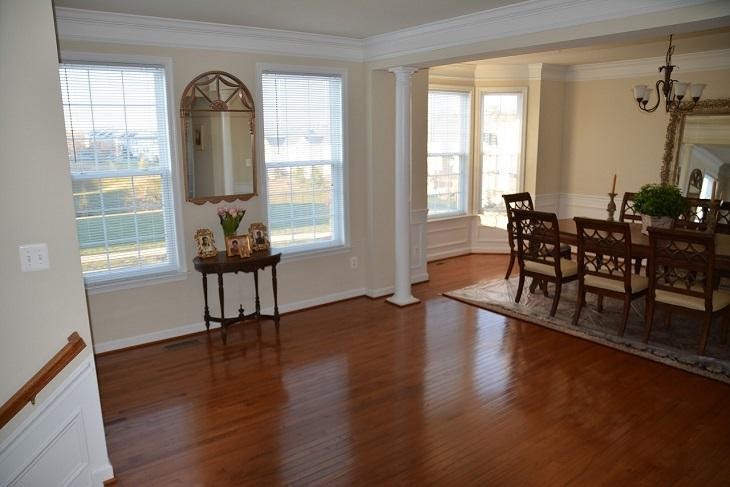Laminate floors are engineered using synthetic flooring products which are often fused together by lamination. They are a less expensive way to simulate wood flooring without the worries of damage.
Being relatively easy to install compared to other hardwood floors, considering their low maintenance and durability, they are advantageous over the standard wooden flooring.
Made of a four-layer composite, they often can sustain wear and tear for a long time before they need replacement.
Bottom layer
It provides support and firmness to the floor and is the base of the laminate.
Centre Layer
Often also referred to as the core layer, it is what sustains the damage and maintains the integrity of the floor.
This layer is what imitates the wood structure and can be a print or a thin wood layer.
Top Layer
This is the protective layer that keeps the print safe and prevents wear and tear, also sustains scratches.
Picking the right laminate floor can be a hassle and can prove to be expensive, depending on a multitude of factors. The choice to make is which floor to pick.
Flooring
They are basically divided into two categories:
Engineered Wood
- Made of multiple layers of real wood, this type of laminate floor is more expensive than its counterpart. The top layer is made of hardwood that is topped with acrylic finish. It can be re-polished to maintain its original beauty with careful sanding even if it is damaged.
- It is, however, not water-resistant.
Plastic
- Completely artificial and made out of fibreboard and wood print finish, these laminate floors are coated with heavy-duty plastic and can sustain heavy scratches including pet claws.
- They are water-resistant and are a cheaper alternative to the engineered wood floors.
- Choosing the laminate needed will determine the base cost of the process. Tiles with a high-quality finish or wood materials will drive the final price higher than normal plastic flooring.
Thickness
- A lot of the cost is associated with thickness, and it is necessary to buy a laminate floor with the right thickness to prevent early damage to the floor. More the thickness, the higher the price.
- They come in 5 types from AC1 to AC5 depending upon the foot traffic in the respective areas of the house.
- AC 4 and AC 5 are apt for commercial use while the other three are ideal for home purposes ranging from light to heavy foot traffic areas like the kitchen.
Finish
- Floors can either be high gloss finish or low gloss hand finish.
- The choice needs to be made according to the environment. A household that is prone to damage due to pet claws and dirty footwear can opt for a less glossy version for a long-lasting damage-free flooring.
Size
- Flooring costs are determined based on the size of the room that needs to be finished. Most places offer prices based on the square meter or square foot.
- The larger the room, the more material is involved and the higher the cost. Although the prices might differ by a few dollars for each design, when flooring a big room, the total cost of a laminate floor might come out to be high.
Services
- Most companies provide additional services for fixing the floor. This service, however, might cost a lot compared to hiring someone just for fixing while providing the materials.
- Any extra work, like removal of the old floor or carpet, will also drive the price higher. When getting quotes, make sure you know what the costs are associated with.
Conclusion: Choosing to laminate the flooring is not just one decision and involves many underlying costs. Depending upon the area one lives in, the prices might also differ.
Rest assured, one can be sure that the laminate floor will stand undamaged for years to come.
- How Primary Care Doctors Are Your First Line of Defense - December 23, 2024
- Live-In Caregiver Jobs: Providing Support, Building Bonds - December 19, 2024
- Caring for Your Porcelain Veneers: Tips for a Lasting Smile - November 12, 2024
